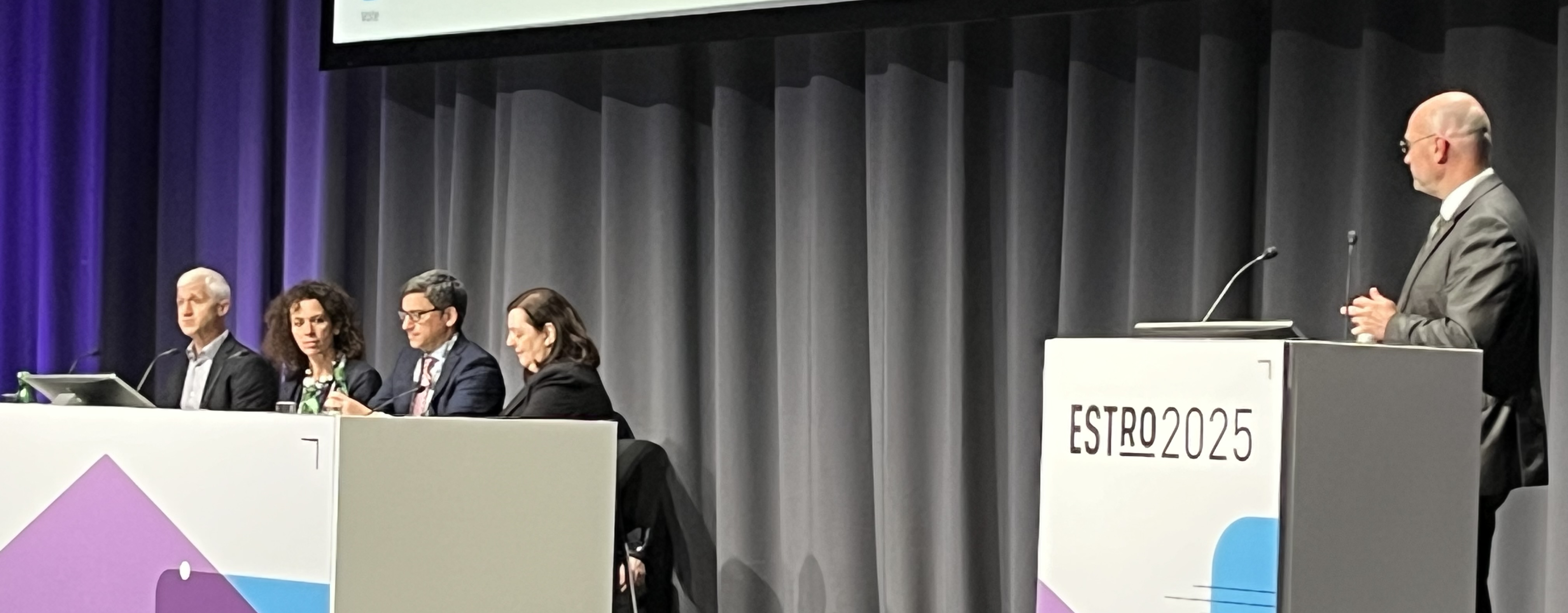A paradigm shift in cancer management
Cancer is a devastating disease and a leading cause of mortality worldwide1. Fortunately, survival rates have increased due to earlier detection and advancements in treatment1. With more people living with metastatic cancer, there is a greater need for personalized therapies. Combining radiotherapy with emerging targeted therapies may fill this need, as demonstrated by initial results from the several clinical trials.
Chemotherapy and immunotherapy are common adjuvant therapies for metastatic disease. However, chemotherapy can have debilitating side effects and many patients don’t respond to immunotherapy. External beam radiation therapy (EBRT) methods deliver a curative dose to bulk tumors and are mainly used for local tumor control. In cases of metastatic disease, EBRT is typically used for palliative care.
Targeted therapies, such as theranostic radionuclide therapy (TRT), also known as radioligand therapy, are emerging as a powerful dual action approach in the fight against cancer. TRT combines diagnostic imaging and targeted treatment by using one radiopharmaceutical to visualize tumors and another to deliver therapy—both directed at the same cancer cell receptor. This personalized approach selectively damages cancer cells while sparing healthy tissue, thereby improving patients’ quality of life and survival outcomes.
As more effective treatment options become available, clinical studies investigating combinations such as combined internal and external radiotherapy (CIERT) are essential for defining optimal dosimetry, understanding radiobiological interactions, and determining sequencing strategies to enhance therapeutic outcomes.
The VISION trial demonstrated that the prostate-specific membrane antigen (PSMA)-targeted radioligand therapy lutetium-177 (177Lu-PSMA-617) can be safely added to standard of care (SOC) treatments (e.g., EBRT) and significantly improved overall survival and radiographic progression-free survival compared to SOC alone3. As important, additional health-related quality of life, pain and symptomatic skeletal event results were delayed in patients receiving both 177Lu-PSMA-617 and SOC4.Certainly, there are opportunities and challenges from the combination of EBRT and TRT, with continued advancements generating much hope and excitement in the radiation oncology community. In EBRT, stereotactic body radiation therapy (SBRT) and image-guided radiation therapy (IGRT) are enabling increased precision and targeted treatments while reducing side effects by limiting dose to healthy surrounding tissue. The potential of TRT includes emerging formulations such as alpha-emitting radioisotopes like Actinium-225, Bismuth-213 and Lead-212, broadening its reach beyond prostate cancer and neuroendocrine tumors.
It is also possible that combined EBRT and TRT may treat both macroscopic and microscopic disease, the latter referring to cancer that cannot be seen with medical imaging (e.g., PET/CT, MRI).
But there are gaps in knowledge and understanding in CIERT regarding dosimetry, toxicity management, protocoling, treatment planning and more that present new challenges. While it may be possible to improve local and systemic tumor control, radiobiological complexity and cumulative dose effects currently remain unknown. Could there be other off-target effects or increased risk of toxicity to organs and bone marrow when both EBRT and TRT are employed? Are cancer treatment centers properly equipped with the advanced imaging, dosimetry tools and multi-disciplinary care teams needed to identify potential candidates and manage these complex treatments? How will clinicians be cross-trained and certified in radiation oncology and nuclear medicine/theranostics? Is there a role for artificial intelligence and technology to help address the additional workload in treatment planning and dosimetry that will likely result with CIERT?
These questions and more were recently addressed during a symposium held during the European Society for Radiotherapy and Oncology (ESTRO) 2025 meeting that discussed optimizing cancer treatment strategies by synergizing EBRT with TRT. Jointly sponsored by GE HealthCare and Elekta, the panel included experts from MIM Software, a GE HealthCare Company, GE HealthCare, Elekta as well as the International Atomic Energy Agency and Vita-Salute San Raffaele University.
To learn more, watch the full discussion (click here/visit)
This article is intended solely for medical professionals. The content herein is designed to support clinical education and should not be interpreted as medical advice for the general public. If you are not a medical professional, please consult a qualified healthcare provider for guidance.
References
- World Health Organization. 2025, February 5. Cancer Fact Sheet. https://www.who.int/news-room/fact-sheets/detail/cancer.
- van der Sar, E. C. A., Braat, A. J. A. T., van der Voort-van Zyp, J. R. N., van der Veen, B. S., van Leeuwen, P. J., de Vries-Huizing, D. M. V., Hendrikx, J. M. A., Lam, M. G. E. H., & Vogel, W. V. (2023). Tolerability of concurrent external beam radiotherapy and [177Lu]Lu-PSMA-617 for node-positive prostate cancer in treatment naïve patients, phase I study (PROQURE-I trial). BMC cancer, 23(1), 268. https://doi.org/10.1186/s12885-023-10725-5
- Sartor, O., de Bono, J., Chi, K. N., Fizazi, K., Herrmann, K., Rahbar, K., Tagawa, S. T., Nordquist, L. T., Vaishampayan, N., El-Haddad, G., Park, C. H., Beer, T. M., Armour, A., Pérez-Contreras, W. J., DeSilvio, M., Kpamegan, E., Gericke, G., Messmann, R. A., Morris, M. J., Krause, B. J., … VISION Investigators (2021). Lutetium-177-PSMA-617 for Metastatic Castration-Resistant Prostate Cancer. The New England journal of medicine, 385(12), 1091–1103. https://doi.org/10.1056/NEJMoa2107322
- Fizazi, K., Herrmann, K., Krause, B. J., Rahbar, K., Chi, K. N., Morris, M. J., Sartor, O., Tagawa, S. T., Kendi, A. T., Vogelzang, N., Calais, J., Nagarajah, J., Wei, X. X., Koshkin, V. S., Beauregard, J. M., Chang, B., Ghouse, R., DeSilvio, M., Messmann, R. A., & de Bono, J. (2023). Health-related quality of life and pain outcomes with [177Lu]Lu-PSMA-617 plus standard of care versus standard of care in patients with metastatic castration-resistant prostate cancer (VISION): a multicentre, open-label, randomised, phase 3 trial. The Lancet. Oncology, 24(6), 597–610. https://doi.org/10.1016/S1470-2045(23)00158-4



